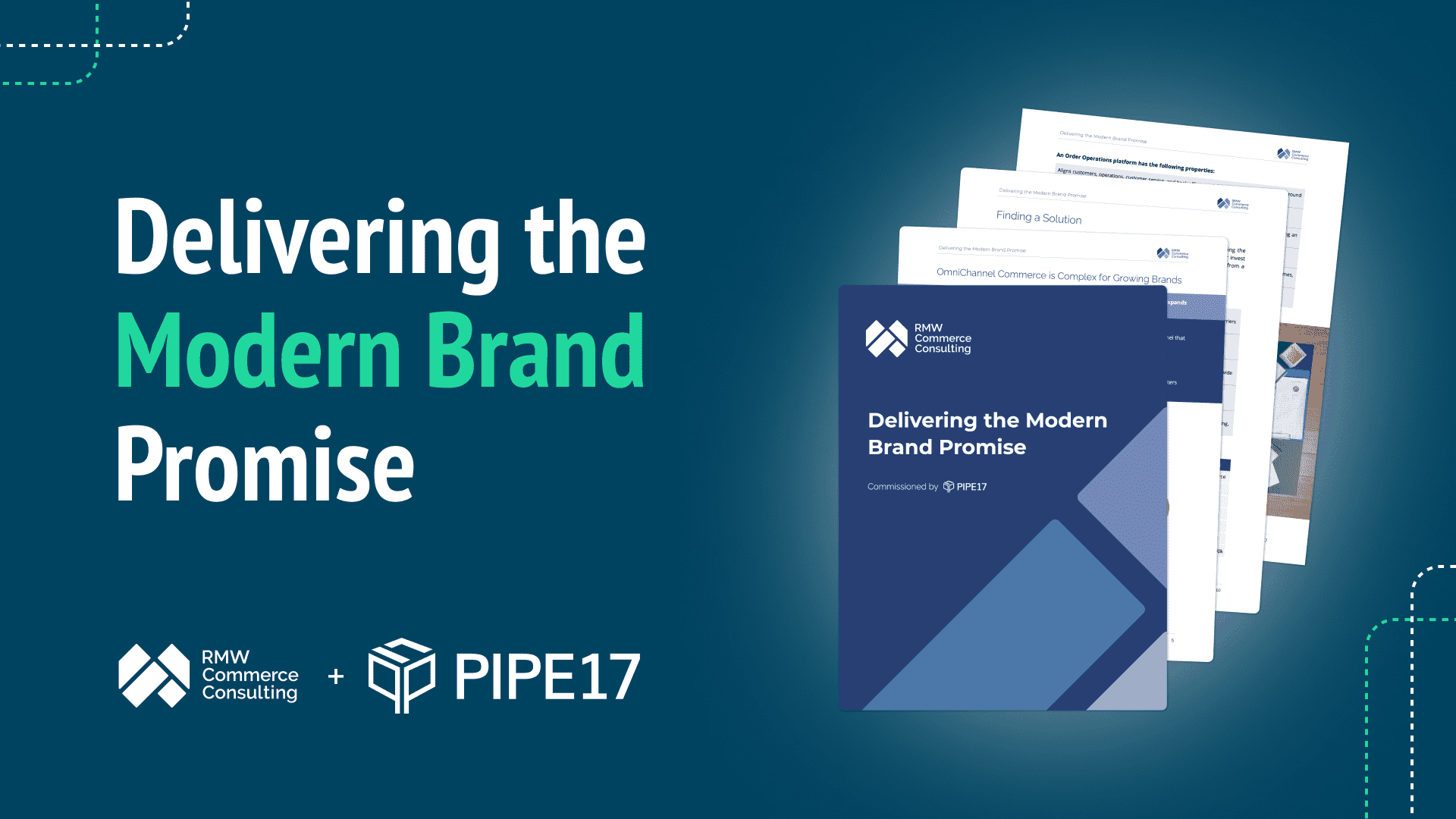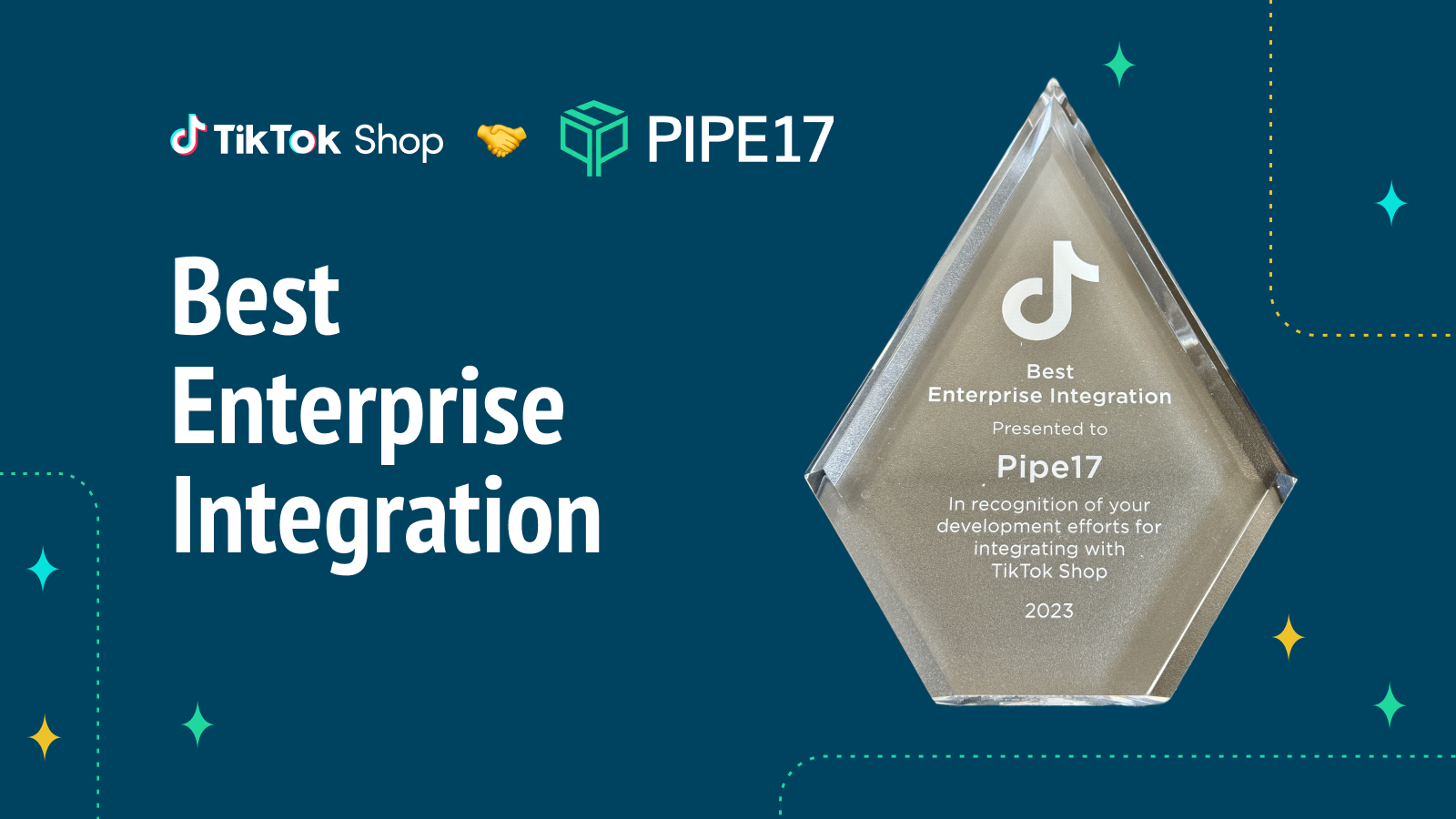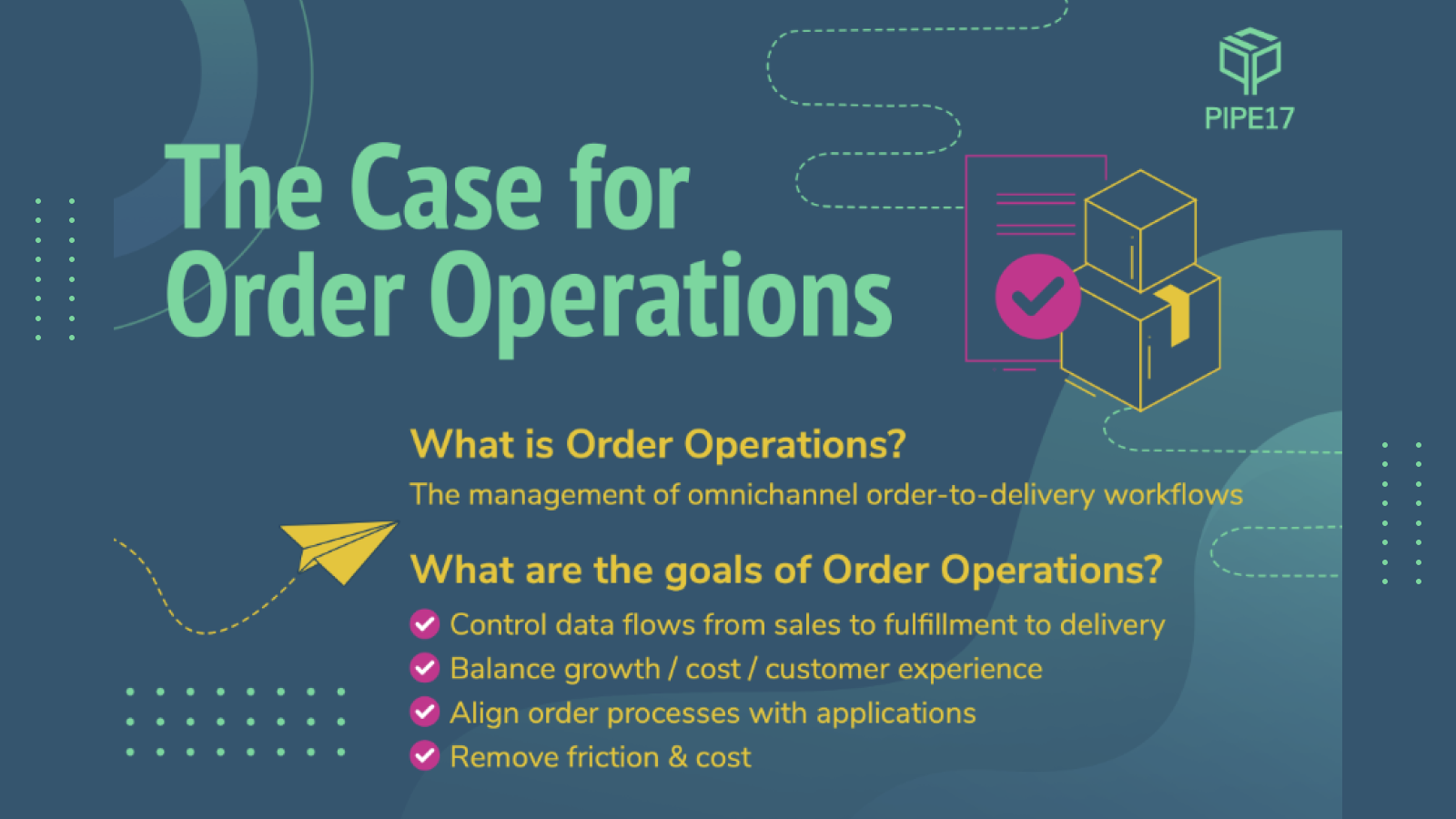When Pipe17 became part of the MACH Alliance last December, our co-founder and head of product Dave Shaffer first blogged about how we are bringing the benefits of Composable Commerce to order operations.
It’s important that all brands understand how modern merchants can fully leverage the advantages of going composable as they grow. Mapping this common journey, and how composable architecture supports each step, helps sellers like you to efficiently and effortlessly scale your order operations without vendor lock-in.
In this technical blog post for the non-technical, I’ll attempt to educate ecommerce operators on why composable commerce should be on your radar. Along the way, we’ll examine some of the alternative approaches, the unique needs of the ecommerce marketplace, and how Pipe17 approaches the challenges posed as merchants grow their business.
Learn More: What is Composable Commerce?
Why composable is right for ecommerce
In his blog, Dave rightly pointed out the 5 benefits of going composable:
- Maximizing sales
- Profitability
- Business agility
- Improved customer experiences
- Fast/simple cross-application connectivity
Composable means that your business can more easily benefit from new capabilities and software innovation. You are free to select the specialized tools you want to best meet the unique needs of your business, without restrictions. It’s easy to connect any new tool, capability, or service provider without interfering with your operations. Probably the greatest benefit of composable commerce is the fact that it usually does not require completely re-engineering your business.
Initially, the focus of the composable revolution was on front-end technologies – including user interface, commerce APIs, content, and search. What has received less attention is the post-checkout process and the order lifecycle. This order-to-fulfillment workflow, and all related data that is passed between sales channels and merchants and fulfillment service providers in the process, is called order operations.
As we all know, and many of us live every day: post-checkout order operations can be very messy. Why is this stuff so hard?
- The ecommerce ecosystem is complex and distributed. The headless commerce architecture means there is more and more data on these moving parts to manage and orchestrate as your business grows.
- Order operations is both a connectivity problem AND a workflow problem. Your channels, applications, and service providers needs to continually talk to each other and share information. Simultaneously, your process for managing orders, products, inventory, and fulfillments needs to work smoothly across all of these parts.
- Orders, products, and inventory must always be in sync. Time lags are costly in terms of stockouts, underselling, WISMO (where is my order) complaints, and delayed closes.
- Vendor lock-in is rampant in ecommerce. Most brands desire flexibility and the agility to leverage best in class applications, instead of being stuck with a particular vendor. But introducing new tools often proves tough as data and workflows can become hard to unwind.
All sellers confront these common challenges.
The downside of traditional approaches
There is general misalignment in the ecommerce market when thinking about what is essentially an IT problem.
Many merchants and brands search first for vendors and applications that can support the business logic required for their order operations, but deal with connectivity requirements as a post-purchase exercise – often left to consultants to figure out. This is a trap way too many brands fall into.
Traditionally, merchants have tried to escape this trap in one of three ways:
- Build everything ourselves. This approach requires hiring a team of developers and continually building new custom connections as you expand. It’s expensive and takes your eye off the ball of growing your business.
- Connect point to point. This approach connects one 3PL directly to Shopify, another 3PL to Amazon, etc. Not only is this piecemeal, but also it can lead to data inconsistencies. There is no one single central view of your business, so you have to manually manage multiple systems to get there.
- Implement ERP and/or OMS with an IPaaS. This approach implements a large, complex software platform, thinking that will surely solve all connectivity problems. Don’t believe the “no code / low code” hype! IPaaS are not built for ecommerce so many features you need may be missing. ERP has been built for B2B markets and not for the massively scalable D2C world of ecommerce. Fundamentally, they have not been designed to be transactional systems for B2C. Lastly, standalone OMS applications offer limited connectivity while simultaneously trying to control everything.
If you invest too much time and money into one of these traditional methods, changing to a more flexible approach like Composable Commerce down the road might seem daunting. Inertia sets in because of the belief that you’re stuck with it. You start to adapt your workflows to the limitations of your ecommerce architecture.
That’s why Gartner believes that composable is the way to go. They predict that by 2024, 70% of large and medium-sized enterprises will have composability as a key criteria for planning their technology stack.
The growth journey of modern merchants
Whether you are a small seller just starting out, or a midsize merchant that’s hitting your stride, (checks notes) many merchants follow a similar journey as they grow.
Does this rundown sound familiar?
Maybe you start out as a DTC seller. You handle pick, pack, and ship yourself until your scale exceeds your local USPS branch!
…You sign your first 3PL to help with fulfillment. They need to connect with your systems.
…Customers demand two-day shipping. To split east and west coast orders, you need order routing.
…You’re ready to sell via a commerce platform. Now inventory flows need to be juggled between two sales channels.
…Time to add B2B sales to the mix. This requires EDI. You need to connect this data to your order operations.
…Congrats! You’re a big business. Your finance department stands up ERP. Closing the books on time means adding another data flow.
…You and your executive team need an analytics dashboard. This means streaming live operational data in real-time.
Are you living with some of these challenges?
All this is why Composable Commerce’s ability to simplify the process of hosting new services makes it ideal for ecommerce. Its inherent flexibility and agility actually streamlines operations while simultaneously reducing costs. Composable is a highly efficient software approach.
Pipe17 is a composable platform
It’s time to break free! It’s time to adopt a composable IT architecture like the kind advocated by the MACH Alliance and supported by Pipe17 and our Omnichannel Order Hub.
Pipe17’s approach to ecommerce order operations is to completely rethink the problem from the inside out. We built connectivity first, which allows us to connect to hundreds of best of breed systems like selling platforms, marketplaces, retailers, B2B, financial systems, ERPs, 3PLs and warehouses. Systems are magically connected in minutes through built-in workflows. Intelligent routing enables orders and other operational data to flow seamlessly. Everything is available as loosely connected services, with each connector deployed independent of the others.
By building order processing workflows on top of our connectivity platform, we ensured that our system scales easily and can ship new features quickly to our customers. Everything is open API-driven, and each pre-built connector has isolated code that handles talking to that specific system. The business logic sits at the core of our API. Our hub acts as a foundational data layer and a single point of access for order and fulfillment status while orchestrating workflows across your ecosystem.
Conclusion: The growth journey of Pipe17 merchants
Remember the merchant growth journey we outlined above? Here’s how Pipe17 can support you at every stage:
…You sign your first 3PL. Pipe17 connects you and orchestrates order flows, ensuring accurate inventory is reflected and your product catalog is synced to the 3PL. Any issue is raised to you automatically via exception-based alerting.
…You split into east/west coast warehouses. Adding additional warehouses or 3PLs means installing a new connection. Once connected, Pipe17 offers smart order routing to locate inventory and ship from the nearest location to control costs.
…You start selling on another commerce platform. Pipe17 automatically updates in-stock inventory across all your sales channels as orders ship and new stock is received.
…You add B2B sales. Pipe17 has channel specific inventory buffers to protect higher margin DTC sales while accelerating B2B. This makes sure that orders are flagged for your review before moving to fulfillment.
…Your finance department has an ERP. Pipe17 ensures all the right data is synced with your ERP systems in the right way.
…You launch an analytics dashboard. Pipe17 streams live operational data to the tool/app/repository in real-time.
Are you a merchant or brand that’s all-in on Composable Commerce? Adopt Pipe17 with the confidence that we will play well with all the best of breed capabilities in your composable architecture.
Not there yet? Maybe it’s time for your ecommerce business to go composable!
Merchants that adopt a composable software architecture like Pipe17 are able to reallocate time and resources to building their brand, increasing visibility, and driving new sales that propel the business forward.






